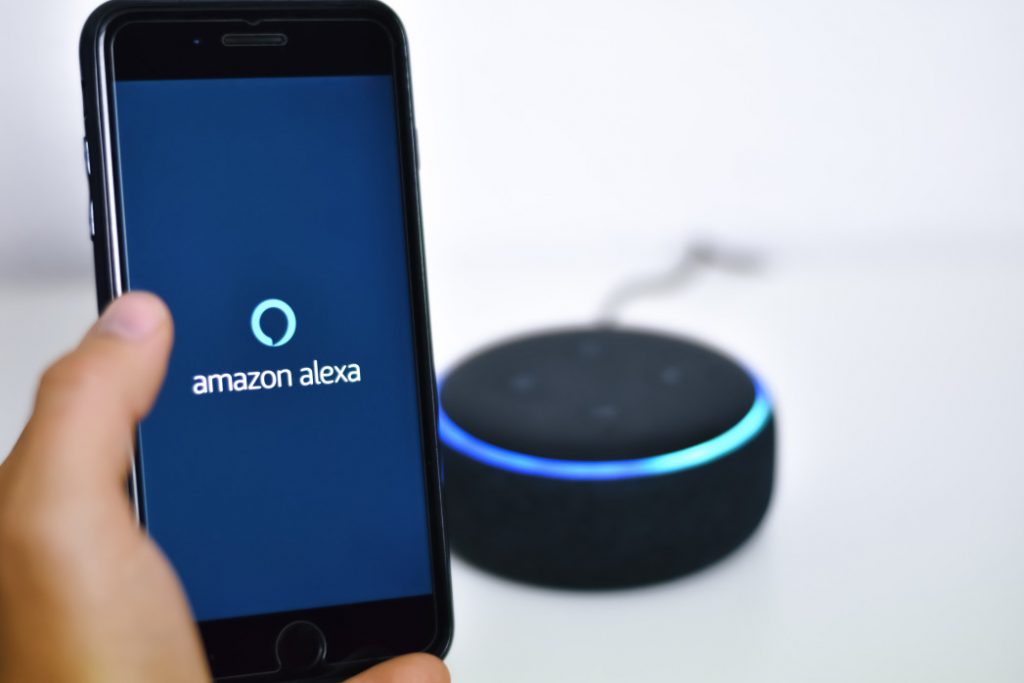
While I write this, I continually get asked how is conversational AI different to a chatbot, how does conversational AI works and what are some examples. So I wrote this to share with my friends and project stakeholders my thoughts which are summaries from several months of work behind AlexandraBot and robotic humanoid interface design.
Conversational AI is artificial intelligence technology that allows computers to communicate in a more human-like way. Conversational AI is able to recognise text and speech, understand its intent, decipher between languages and tone of voice, and respond accordingly. Certain technologies within conversational AI allows for the mimicking of human communication to make users feel like their speaking with a human, not with a computer. So, while this notion can make some uncomfortable (and rightfully so), conversational AI is already deeply embedded into the way we operate our homes and businesses — perhaps without even realising it.
Not to mention, conversational AI has so many applications and potential benefits, creating exciting opportunities for customer service and personal efficiency. To give you a better understanding of conversational AI and how it works while acknowledging the challenges this new technology presents, here’s our brief (yet complete) guide to the ins and outs of conversational AI.
How does conversational AI work?
Conversational AI is actually an umbrella that holds a variety of different kinds of amazing technologies, used in various ways. The main technologies that are integrated into conversational AI include:
- Automatic Speech Recognition (ASR) = Listening
- Natural Language Processing and Generation (NLP and NLG) = Understanding
- Advanced Dialog Management = Responding
- Machine Learning (ML) = Intelligence
First, conversational AI devices use ASR to recognise speech either through text or voice activation. Conversational AI needs the ability to “listen” and recognize the input it’s given and counts as the first step in the process of how it works. Once the AI is able to recognise speech, it’s sent to its NLP centre to “understand” what was said. So, not only must the conversational AI recognise the words or sounds, but it also needs to process the intent of that information to make sense of it. Next, it’s time to orchestrate an appropriate response. It takes the intent of the message and uses Advanced Dialog Management to transfer the information back through the NLG –this time to create a message using language tools.
At this stage, many conversational AI tools like Facebook Messenger Bots can manage just fine for their purposes. But, machine learning can make things a little more interesting. Machine learning adds a layer of intelligence to the mix by using context and previous information to form more detailed responses. For example, you might ask, “Where is the nearest petrol station?” and then follow up that question with, “What time do they close?” Conversational AI with machine learning capabilities will be able to answer both questions correctly, even though the second question doesn’t offer enough information to answer it on its own.
Examples of Conversational AI
Perhaps without realising it, you’ve likely heard of conversational AI in action. In fact, you’ve probably used conversational AI at one point or another. In other words, this technology is more popular than you might think.
Some of the most common examples of conversational AI so far include:
- Facebook Messenger Bots
- Alexa and Siri
- Customer Service AI
Facebook Messenger Bots
If you’ve checked out a Facebook Business page and were instantly greeted with an automated message, that’s a Facebook Messenger Bot in action. If you responded to that message, whether that was to make a booking or ask a question about your package, then yes — that means you’ve spoken to a Chatbot. Facebook Messenger Bots are extremely common these days and allow businesses to interact with their customers instantly, even if a representative is busy or unavailable. Businesses can automate these Chatbots to answer FAQs or to help clients schedule appointments without the need for human interaction.

Alexa and Siri
Alexa, play Taylor Swift.
Hey Siri, when’s my dentist appointment?
These kinds of phrases are now part of the modern vernacular and it’s likely that conversations with these kinds of AI devices are only going to become more common as time goes on.
AI personal assistants like Alexa and Siri can help people do almost anything. Set a kitchen timer by asking for it, turn on and off your lights with your voice, adding things to your grocery list without a pen and getting last nights stock reports to read to you each morning.
In short, Alexa and Siri are just popular forms of conversational AI that make life easier.

Customer Service AI
Like Facebook Messenger Bots, customer service AI using conversational technology is becoming more and more widespread.
When you check out a website and a pop-up chat comes up asking, “How can I help you?”, you can assume that it’s conversational AI at work — at least until a representative signs on a takes over.
As you can see, conversational AI is nothing new and you’ve likely already used this technology yourself. It’s something we’re all getting used to, but it’s obvious that it makes life simpler in a lot of ways.
Challenges of Conversational AI
As with any exciting technology, there will be challenges, both on the technical side and the ethical side of things. So, let’s briefly acknowledge these challenges.
Technological Challenges of Conversational AI
Getting a computer to communicate in a human-like way is no small feat. The way we communicate with one another is extremely complex. And with that, some of the major technological challenges of advanced conversational AI include:
- Languages, Dialects and Accents
- Outdoor Settings and Excess Noise
- Unscripted Questions and Answers
- Tone and Sarcasm
- Slang and Jargon
Still, engineers are making strides in these areas all the time to help computers better understand how we actually interact, even with all those various nuances of human communication.
Ethical Challenges of AI
The ethical challenges facing conversational AI engineers may actually be even more complex than the technological ones. Some of the major concerns people have about this technology include:
- Privacy and Security
- Discomfort and Hesitation
While the solutions to these problems are still up for debate, it should be known that conversational AI companies are deeply interested in providing a product that’s not only promising for both personal and business use, but also safe, secure and ethically sound.
What is conversational AI?
So, to wrap things up, let’s summarise conversational AI and its benefits. This innovative technology aims to allow computers to communicate with humans in a human-like way to solve problems both personally and professionally.
We believe that conversational AI can help businesses save money, reduce inefficiencies, offer high-quality 24/7 customer service and virtual assistance for employees and customers. And that’s only the beginning.
What are your thoughts on conversational AI? Do you use this technology in your home or business? If not, why not?